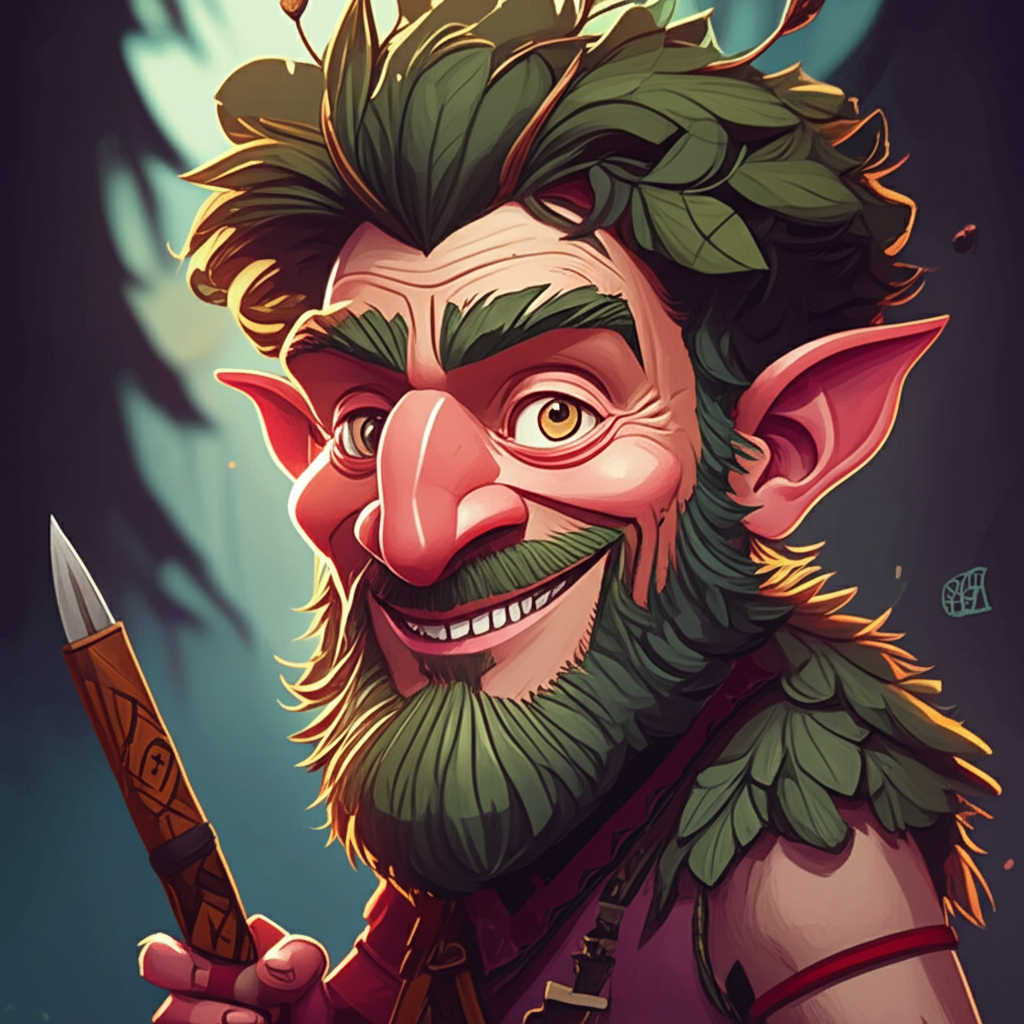
The ancient forests and vast river valleys of Eastern Europe, particularly the lands that would one day form the heart of Kievan Rus’, were once alive with tales woven from the threads of nature and the human spirit. These were not scientific explanations of the world, but stories, passed down through generations, that sought to understand the mysteries of the wild and the human place within it. Among these ancestral narratives, the figure of the Leshy, a spirit deeply connected to the sylvan realm, emerges as a potent echo of a time when the boundaries between the natural and the supernatural were fluid, and when the forest itself was perceived as a living, breathing entity.
The era of Kievan Rus’ (roughly from the 9th to the 13th centuries) was a time of burgeoning states, vibrant trade routes, and a deeply ingrained pagan worldview that gradually began to intertwine with the arrival of Christianity. The people of this land lived in close proximity to nature. Their lives were dictated by the cycles of the seasons, the bounty of the earth, and the ever-present power of the wild. Forests, dense and ancient, were not merely places to gather wood or hunt; they were vast, untamed territories, often seen as harboring unseen forces, spirits, and beings. The world was a place of inherent magic, where the rustling of leaves could be a whisper, and the shadow of a tree could hold a watchful eye. It was within this context of awe, respect, and a touch of trepidation for the untamed wilderness that the stories of the Leshy took root and flourished.
The Leshy, as depicted in these ancient tales, was not a single, monolithic entity, but rather a collective concept representing the spirit and guardian of the forest. Often described as an anthropomorphic being, its form was said to be mutable, capable of shifting to blend seamlessly with its surroundings. Some accounts portray it as a towering figure, its body made of bark and moss, with eyes like glowing embers and a beard of tangled roots. Others speak of it appearing as an ordinary man, perhaps a hunter or a traveler, but with an uncanny aura that marked it as belonging to the wild. Its size, too, was said to be variable; it could shrink to the size of a blade of grass or swell to encompass the entire forest canopy. The Leshy was believed to possess an intimate knowledge of every tree, every animal, every hidden glade. Its voice could mimic the sounds of the forest – the hoot of an owl, the howl of a wolf, the crackling of branches – and it was said to be able to lure travelers astray with its deceptive calls or guide them to safety with a gentle nudge. It was the keeper of the forest’s secrets, its moods, and its inhabitants.
One recurring narrative thread in the folklore surrounding the Leshy involves its interaction with humans, particularly those who ventured into its domain. Imagine a hunter, perhaps from a village nestled on the edge of a vast, ancient forest, his breath misting in the crisp morning air as he tracks a deer. He has entered the Leshy’s territory, a place he respects but also fears. As he pushes deeper, the familiar paths seem to twist and turn, the trees closing in around him. The sunlight, which had been dappled, now seems to dim unnaturally. He hears a rustling, but it is not the sound of his prey. It is a sound that seems to come from everywhere and nowhere at once. He might see a fleeting glimpse of a figure, impossibly tall, or perhaps a familiar-looking man who beckons him further into the woods. If the hunter shows respect for the forest, perhaps by leaving a small offering of bread or grain, the Leshy might appear benevolent. It could guide him to a bountiful hunting ground, or lead him back to his village when he is lost. However, if the hunter shows disrespect, perhaps by carelessly breaking branches, disturbing the wildlife, or entering with ill intent, the Leshy’s wrath could be swift and disorienting. It might lead him in circles for days, his supplies dwindling, his mind filled with phantom sounds and visions, until he is utterly lost and bewildered, a stark reminder of the forest’s power. Sometimes, the Leshy was said to be a playful trickster, enjoying the confusion it could sow among humans, while at other times, it was a stern protector, fiercely guarding its domain from those who would harm it.
The symbolic attributes of the Leshy were multifaceted, reflecting the ancient Slavs’ complex relationship with their environment. Primarily, it represented the untamed, primal force of nature. Its ever-changing form symbolized the unpredictable and sometimes elusive nature of the wild. Its ability to both protect and mislead mirrored the dual nature of the forest – a source of sustenance and shelter, but also a place of danger and disorientation. The Leshy could embody the wisdom of the ancient trees, the resilience of the wilderness, and the interconnectedness of all living things within the forest ecosystem. It served as a reminder to humans to tread with humility and respect in the face of nature’s grandeur, to understand that they were not masters of the wild, but rather a part of its intricate tapestry. Furthermore, the stories of the Leshy could also carry moral lessons, illustrating the consequences of hubris and disrespect towards the natural world.
In the modern world, the echoes of the Leshy persist not as a literal belief, but as a rich source of inspiration for various forms of creative expression. In literature, it might appear as a enigmatic forest spirit in fantasy novels, a silent guardian of ancient woods, or a capricious entity that challenges protagonists. In video games, its archetype can be seen in forest-dwelling creatures, nature spirits that offer quests or present formidable obstacles, or even as a personification of a wilderness biome. In academic circles, the Leshy is studied as a significant element of Slavic folklore, offering insights into the historical worldview, cultural anxieties, and spiritual beliefs of the people of Kievan Rus’. It serves as a window into their understanding of the world and their place within it.
In conclusion, the tales of the Leshy, originating from the ancient forests and river valleys of the lands that became Kievan Rus’, are powerful narratives that offer a glimpse into the worldview of our ancestors. They are not accounts of verifiable beings, but rather imaginative stories born from a deep connection with nature and a desire to understand its mysteries. As Muslims, we recognize that the true Creator and Sustainer of all existence is Allah, the Almighty. These ancient myths, however, hold a valuable place in our understanding of cultural heritage, the evolution of human thought, and the enduring power of storytelling to shape our perception of the world around us. They remind us of the rich tapestry of human imagination and the enduring tradition of sharing stories that connect us to our past and to the natural world.





